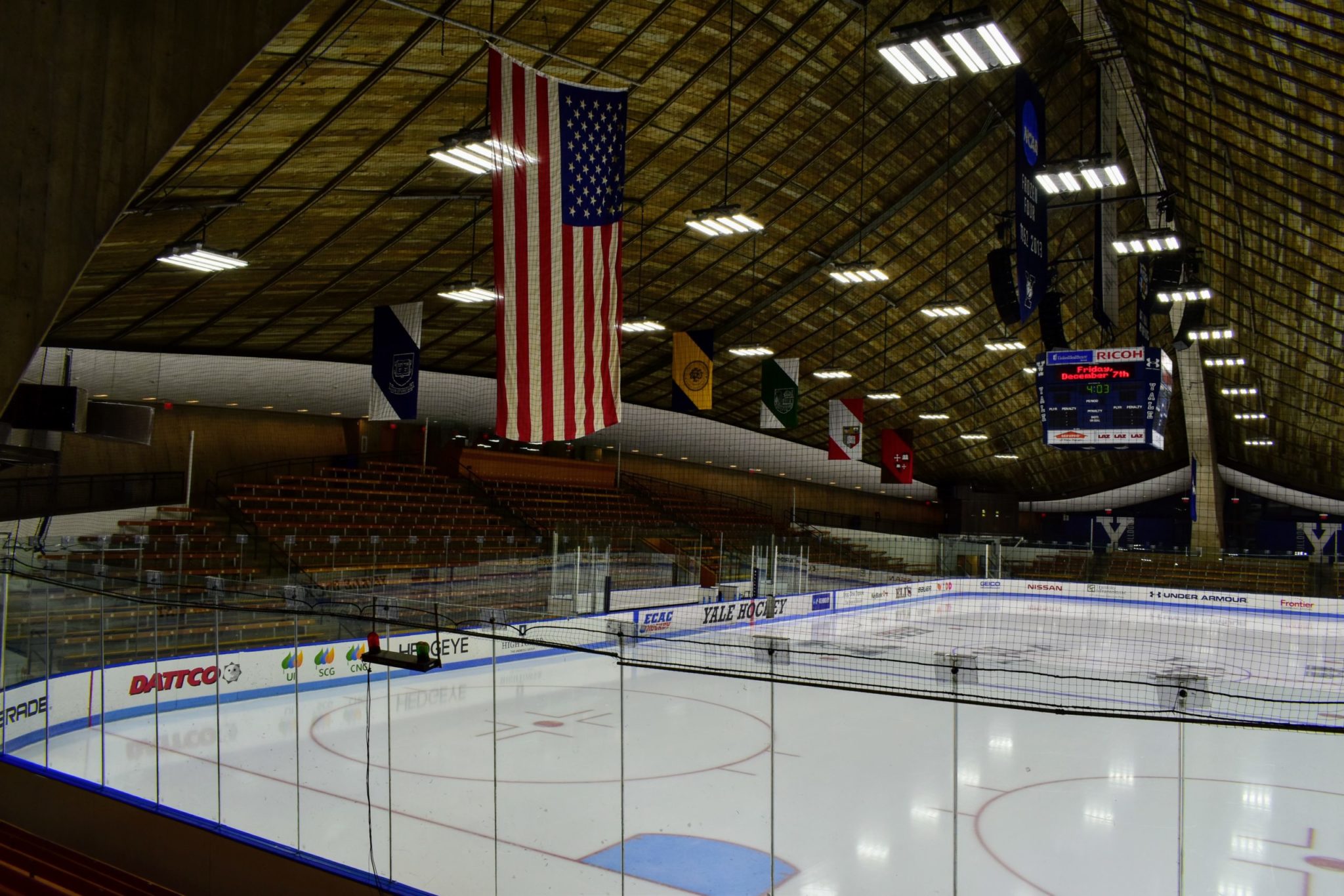
Jasmine Su, Staff Photographers
The University has changed its COVID-19 alert level from green to yellow after recording 18 positive cases on the men’s hockey team over the past three days.
The cluster first emerged on Tuesday, Oct. 13, with six positive cases among players. Two days later, the COVID-19 statistics dashboard reflected nine new COVID-19 cases from tests administered on Tuesday — two on-campus undergraduates and seven off-campus undergraduates — representing a record one-day high. At the time of publication, the dashboard does not reflect the updated case count.
According to a University-wide email from COVID-19 Coordinator Stephanie Spangler on Thursday afternoon, there have been 12 additional cases among team members. There are now a total of 18 COVID-19 cases stemming from the original cluster — out of the 19 team members currently enrolled and living in New Haven.
“All of these cases involve members of the men’s ice hockey team, and all of these students have been instructed to isolate,” Spangler’s email reads. “All other members of the men’s ice hockey team who are in the New Haven area, as well as the Athletics staff who have worked directly with them, have been instructed to quarantine and to participate in the university testing program, whether or not they have been identified as close contacts of infected team members.”
“Rigorous contact tracing efforts are underway to identify any other individuals who may have been close contacts of the infected team members and to instruct them to quarantine and participate in testing,” she wrote.
The decision to raise the COVID-19 alert level comes after the University lowered it only two weeks ago, when the alert level was changed from yellow — which denotes low to moderate risk — to green, which denotes low risk. This change two weeks ago was made after the campus had transitioned past the risky quarantine period where students and faculty were returning to campus from around the world.
Under a yellow alert level, the University may implement new measures to control the spread of the virus, including targeted quarantines and targeted restrictions on campus access.
Spangler also outlined other cautionary measures the University has taken, including halting all in-person training activities for varsity athletic teams and intramural programs. Further, certain athletic facilities, such as Payne Whitney Gymnasium, Ingalls Rink and the Cullman-Heyman Tennis Center, have been closed for cleaning until Oct. 19.
In a Thursday afternoon email to undergraduates, Dean of Yale College Marvin Chun stated that protocols to address increased case counts are in effect, including isolation, quarantine and contact tracing.
Chun wrote that most of the students who need to quarantine have heard from contact tracers by now. He advised students who have been in close contact in the past week with a member of the men’s hockey team, or with anyone who has tested positive, to quarantine in their room or off-campus residence and call the Campus COVID Resource Line for instructions.
“You are already familiar with the yellow alert level because it was in effect during the first weeks of the semester,” Chun wrote in the email. “Even so, please ensure that you are taking the usual steps to protect your health and others’: cover your face when you are in public, stay six feet apart, keep your hands clean, complete your daily health checks, and stick to your testing schedule. Please be especially attentive to these practices, not only during the yellow alert but always.”
Chun directed students to the COVID-19 Statistics page to find publicly available statistics on the state of public health on campus.
According to Spangler, the COVID-19 dashboard, which shows statistics about the University’s asymptomatic testing program, is used to share information with the Yale community about the spread of the coronavirus. While the dashboard is updated daily as information about testing becomes available, the updates are not made in real time. Although students tend to receive their test results within 24 hours, it takes two to three days before data from those tests populate the website.
“It is important to note that tests and positive cases are shown on the dashboard by the date on which a test specimen was collected,” University COVID-19 Coordinator Stephanie Spangler wrote in an email to the News Tuesday afternoon, before she sent an email update to the community. “There is a 2-3 day delay between the time when specimens are collected and when test result data become available to include in the dashboard.”
After students received Spangler’s email, the News asked University spokesperson Karen Peart and Spangler for comment on the reason behind dashboard delays, how many people have been contact traced and whether any students in the cluster violated the Community Compact. They did not immediately respond.
Yale College Council President Aliesa Bahri ’22 told the News that she encourages all members of the Yale community to review the Community Compact.
She further emphasized the importance of abiding by public health habits — wearing masks, getting tested routinely, practicing social distancing and washing hands regularly — and holding each other accountable.
“Please also use the Yale College COVID-19 Community Concerns form if you see any concerning behavior that may pose a threat to the health of our community,” Bahri said.
As of the evening of Oct. 15, Yale is reporting 51 positive COVID-19 cases since Aug. 1.
Julia Bialek | julia.bialek@yale.edu
This is a developing story.
Clarification, 7:47 p.m.: A previous version of the article stated that 19 team members were in New Haven. In fact, that number reflects the total count of players enrolled and living in New Haven.
Update, 12:25 a.m. Oct. 16: This article has been updated with additional information.







